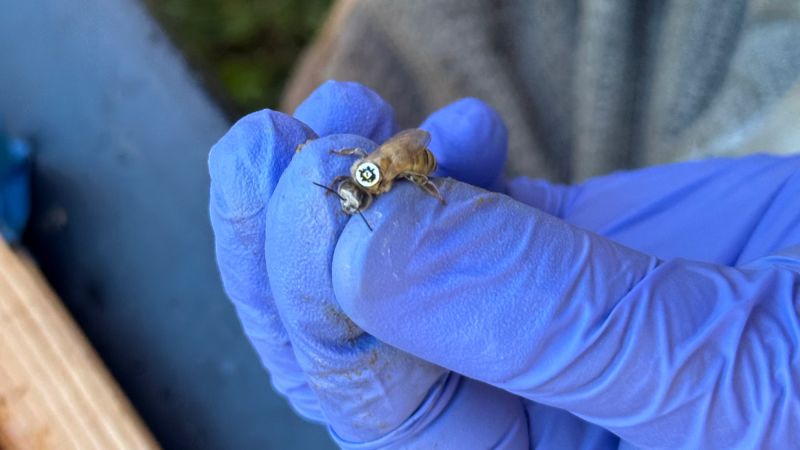Recent research led by scientists at Penn State University has revealed significant advancements in our understanding of bee behavior, particularly focusing on their movements and life cycles. This innovative study utilized tiny QR codes, known as AprilTags, affixed to the backs of the bees to monitor their activities as they entered and exited their hives. These insights shed light on the foraging behaviors and longevity of bees, crucial factors in the broader context of environmental health and agriculture.
The research team observed that while the majority of bee foraging trips lasted only a few minutes, a small percentage of bees were recorded spending up to two hours outside the hive. According to the co-author of the study, Margarita López-Uribe, who serves as an associate professor of entomology at Penn State, this data suggests that most foraging activities occur relatively close to the hive. The implications of this finding are profound, indicating that bees may prioritize nearby resources when searching for food.
Additionally, López-Uribe elaborated on the idea that longer-foraging trips could serve multiple purposes beyond merely seeking food. Some bees may be exploring their surroundings, potentially expanding their knowledge of the environment, while others may not return to the colony at all. This highlights the complex social structure and life strategies within bee populations.
Traditionally, it has been believed that the average lifespan of a bee is around 28 days. However, Robyn Underwood, a Penn State Extension educator in apiculture and also a co-author of the paper, indicated through the research that bees may actually live longer than previously assumed. The observations revealed instances of bees foraging actively for up to six weeks and commencing their foraging activities at about two weeks of age, thereby suggesting a lifespan extending significantly beyond earlier estimates.
The methodology employed in the study was notably unique. Entomologists collaborated with electrical engineers to meticulously attach the mini QR codes to the bees using a specialized adhesive. This process, according to López-Uribe, required significant practice to perfect, as too little glue would allow the bees to remove the tags, while too much could lead to excess adhesive on their bodies that might impede their movement.
The research team’s innovative approach involved an automated imaging system capable of monitoring bee movements continuously, day and night, using a customized hive entrance. This resulted in the tracking of over 32,000 bees, vastly exceeding data collected through conventional observational methods traditionally reliant on human oversight.
The researchers hope that their methods can be replicated globally, as outlined by López-Uribe, who emphasized the goal of developing an open-access system that utilizes affordable equipment. This would empower scientists across different regions to gather significant data about bee behavior in a variety of landscapes.
Future directions of the research will seek to determine how far bees are willing to fly from their hives in search of food, and whether their foraging ranges are influenced by the availability of edible resources in their vicinity. López-Uribe noted that the underlying premise is that if hives are strategically placed in areas rich in high-quality food sources, the bees would likely forage nearby, which could assist beekeepers in managing the foraging ranges of their colonies.
Ultimately, this endeavor aims to bolster the standards of organic beekeeping in the United States. Current regulations require that hives be situated in pesticide-free zones no more than 5 kilometers (approximately 3.1 miles) from such areas. By integrating the findings from this research, beekeepers may have the opportunity to enhance the health of their colonies and the viability of pollinator populations overall.
The significant findings from this study have been published in the journal HardwareX, contributing to a growing body of knowledge that underscores the importance of technological integration in the study of insect behavior and ecology. As scientists continue to explore the complexities of bee dynamics, the results of this research will undoubtedly play a crucial role in shaping more sustainable agricultural practices for the future.











